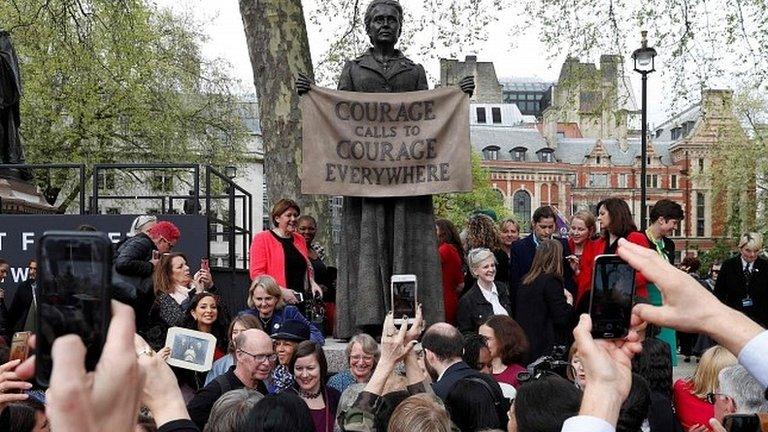Review: The statue of the suffragist Dame Millicent Fawcett by Gillian Wearing ★★★★★
- Published
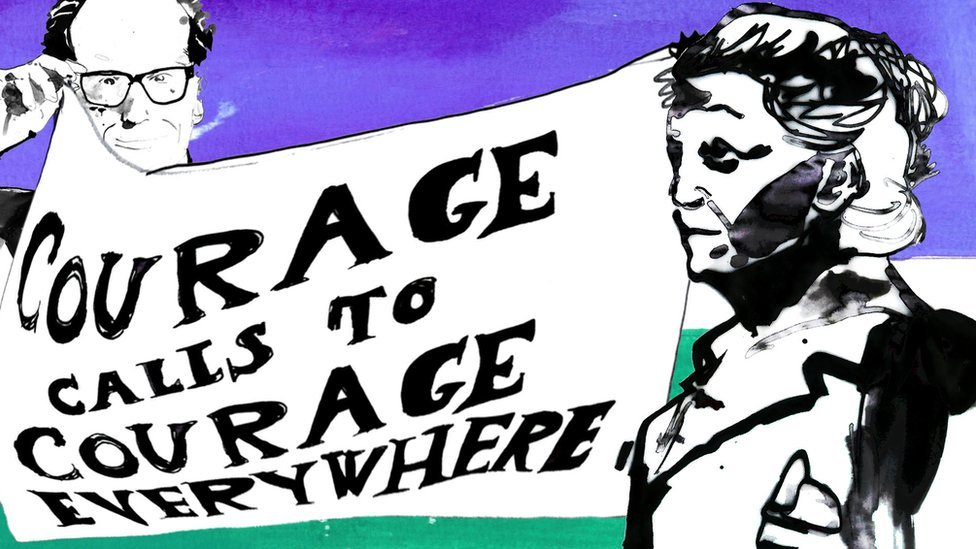
I think it's fair to say that on the whole we have the same relationship with all those public statues of long dead grandees dotted around our towns and cities as we do with the terms & conditions box we are asked to click on for a software update.
That is to say, by and large, we ignore them.
A bit like the stars in the sky during the day - we just don't see them. They have become invisible, a part of an urban fabric that forms the backdrop to our busy lives.
There are exceptions, of course even beyond divisive figures such as Cecil Rhodes, who has gained renewed visibility in our post-colonial age.
In London's Parliament Square, for instance, the pugnacious representation of Sir Winston Churchill stands out from the mainly 'invisible' statues of other political figures.
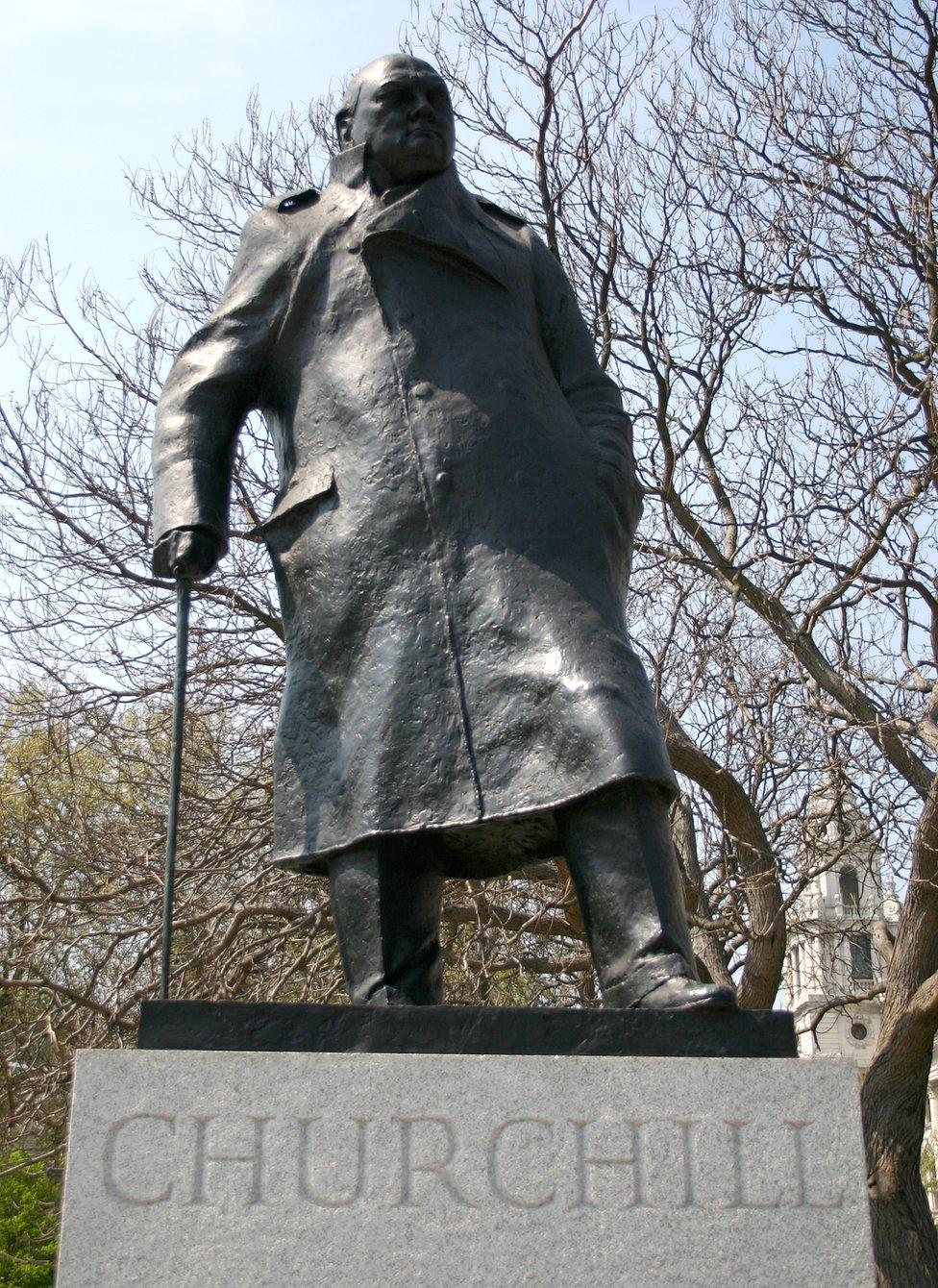
Statue of Sir Winston Churchill in Parliament Square, by Ivor Roberts-Jones, which was unveiled in 1973
As does a slightly comical depiction of David Lloyd George next to him, in which the last Liberal Prime Minister is made to look curiously like the Fat Controller out of Thomas the Tank Engine.
But until Tuesday it was an entirely male line-up in the Square.
Thankfully, that has now changed with the welcome arrival of Dame Millicent Fawcett (1847- 1929) to the ranks.
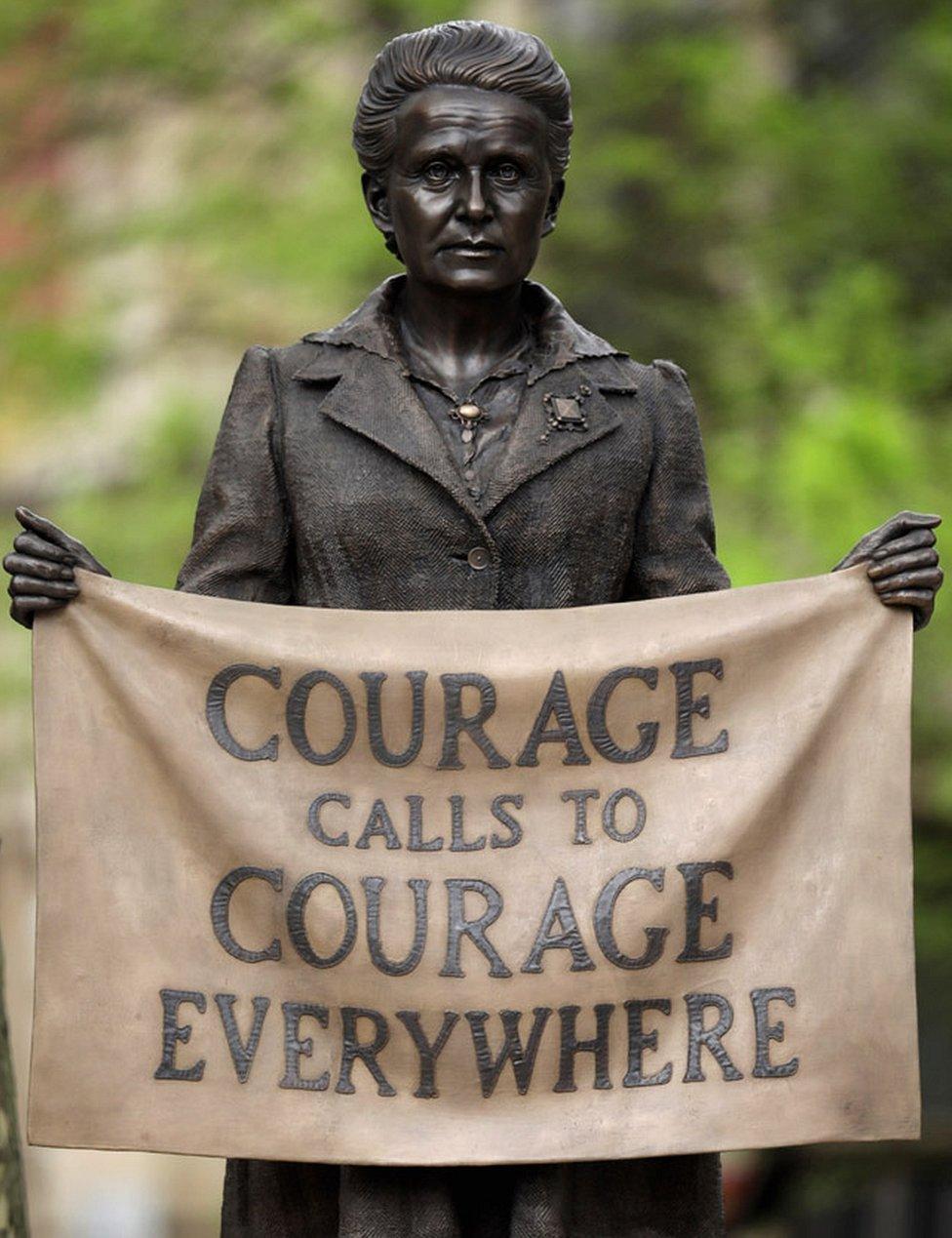
The statue celebrating the life of the suffragist, Dame Millicent Fawcett, in Parliament Square
Credit for this goes to the writer and activist Caroline Criado Perez, who made the initial suggestion of having a statue to commemorate the suffragist who fought for decades for women to have the vote.
That the statue is of a woman makes it exceptional.
But it is also exceptional in terms of its execution by the Turner Prize-winning artist Gillian Wearing.
60 Minutes Silence was Gillian Wearing's Turner Prize-winning work
I'm not only talking about the technical side of things and the quality of the work by the foundry, which is first class (they've made bronze look and feel like tweed). But also the conceptual element of its creation, which is the bit Wearing really excels at.
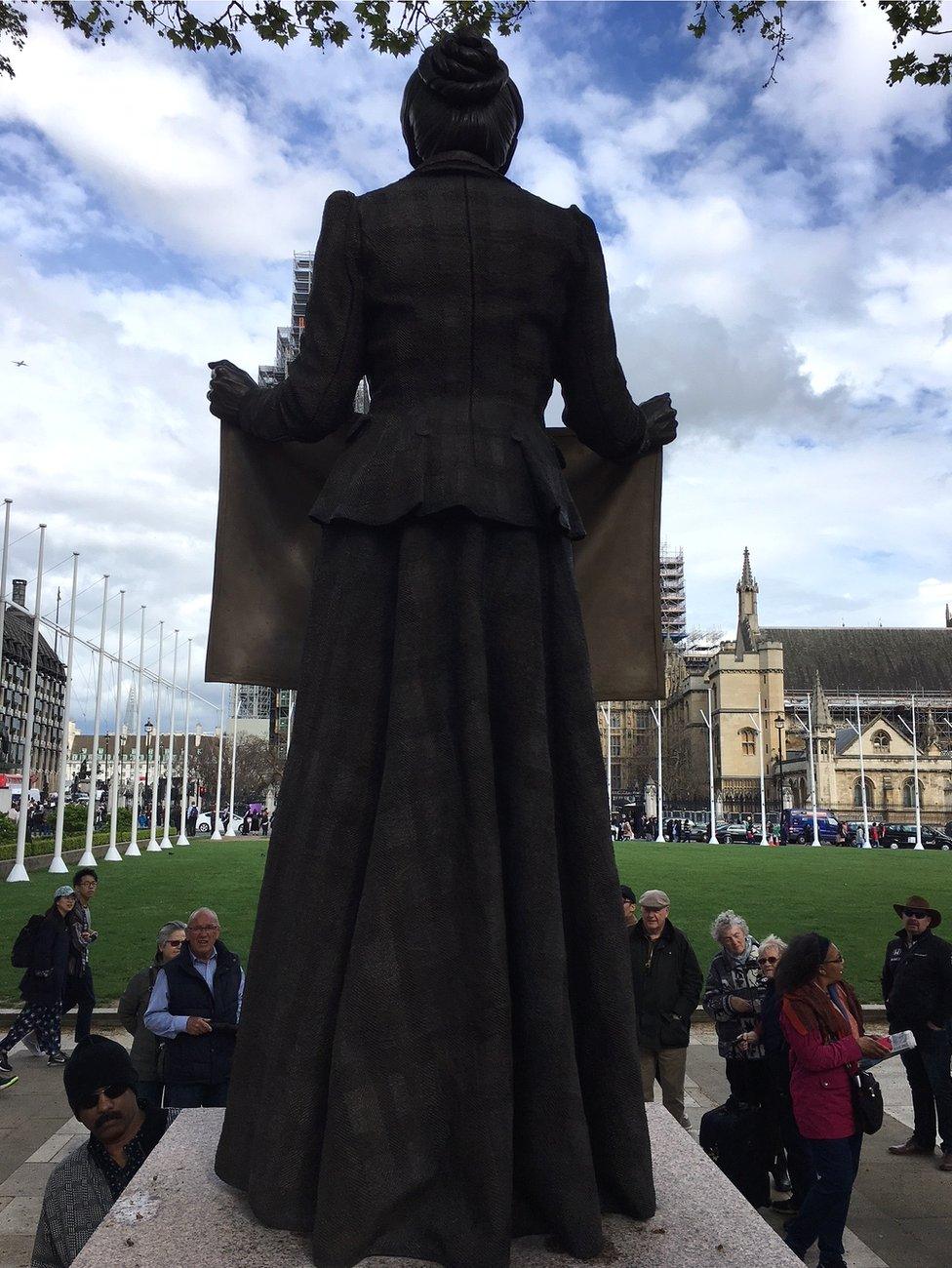
The foundry that cast the bronze statue made Millicent Fawcett's outfit look and feel like tweed
As an artist, Gillian Wearing has spent most of her life exploring the extraordinary inner lives of outwardly ordinary people. She is a chronicler of the everyday, a champion of the disregarded. And that is why it makes perfect sense for her to be given the job of making this new public statue.
She knows how to make us see the overlooked.
And so the first thing you notice about the statue is not Millicent Fawcett.
It is the banner she holds across her body reading 'Courage Calls To Courage Everywhere', that catches the eye. The text is taken from a reflective piece Fawcett wrote about the suffragette Emily Wilding Davison who died after running onto the Epsom racecourse during the Derby in 1913.
It is a compelling statement.
It is also a call-back to the artworks that made Wearing's name.
In the early 1990s she produced a series of photographs with the collective title, 'Signs That Say What You Want Them To Say And Not Signs That Say What Someone Else Wants You To Say (1992-93).

"I signed on and they would not give me nothing," 1992-3, on display at Tate Britain
To make the work she had to overcome her natural shyness to approach people randomly on high streets or in parks to ask them to write down an inner thought on a large piece of white card.
Those who agreed were then asked by Wearing to hold up their personal statement while she took their photograph (think Bob Dylan and his one-word lyrics on placards in Subterranean Homesick Blues film).
The point of the exercise was a revelation, to make their private public. 'I'm desperate', wrote a young man with a side parting and a smart suit and a tie. A less well-dressed, slightly older man held up his card, which read, 'I've Thought About Being A Gigolo But I'm Worried About The Health Risks!'
You can view these images as stand-alone artworks, or as a unified entity, or as documentation of a performance piece by the individuals who participated. Or, when you look at them now in the context of the bronze Millicent Fawcett, as living statues.
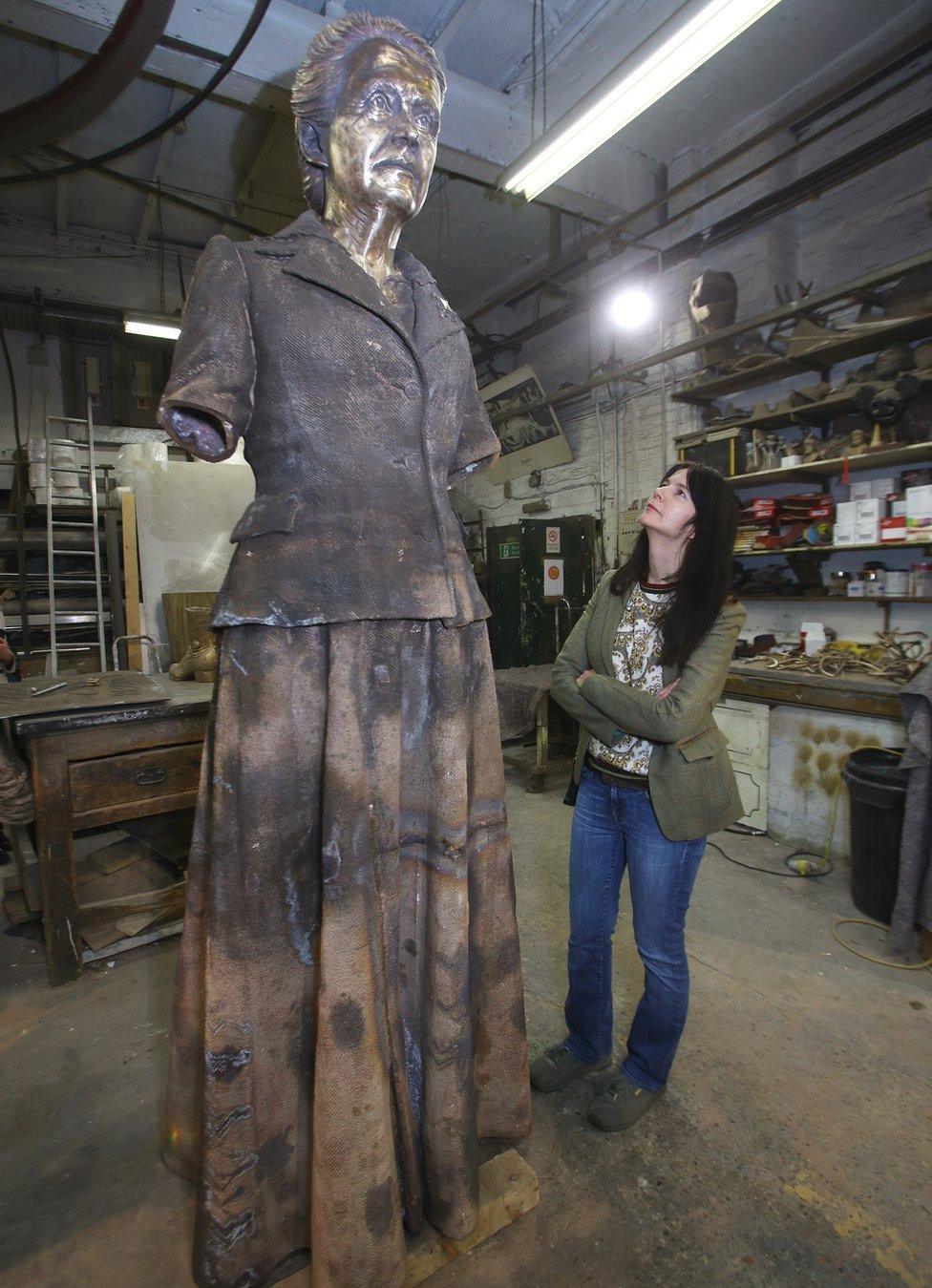
Gillian Wearing on a visit to the foundry, which was casting her statue of Millicent Fawcett
All of which is to say, there is more to the slogan that the suffragist holds than the words we read.
It is, for Wearing, an expression of Fawcett's inner feelings: her truth.
It is as much a statue of the subject as it is of the lifelike figure behind.
The Fawcett we meet is middle-aged, dignified and resolute.
Wearing doesn't do hyperbole or grandstanding; she is more interested in finding the dazzling in normality.
Hence, she gives us Millicent Fawcett unmasked, a private woman on a public stage.
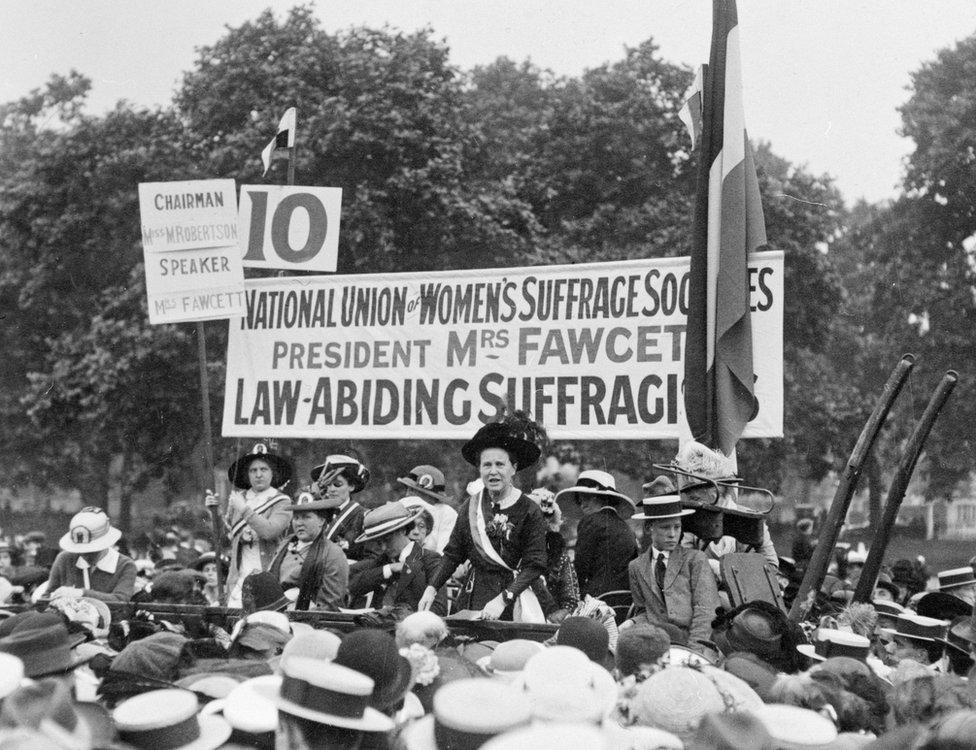
Millicent Fawcett speaking at a rally in Hyde Park in around 1913
A woman who went through her life without compromise, and now stands facing Parliament in a no-nonsense 'walking suit', challenging those inside to do the right thing.
Which brings us to the most potent part of this statue, and that is the weighty impact it makes as a piece of contemporary sculpture.
I'm not talking about its scale, or about its form, or the materials from which it has been made. Neither am I talking about all those neat smaller details, like the belt of photographs of Fawcett's fellow campaigners that goes around the top of the stone plinth on which she stands.
In fact, I am not talking the physical object at all.
I am talking about the effect it has on its surroundings.
That is sculpture's secret weapon.
It doesn't just occupy a space; it alters how we read the environment around it.
The Fawcett statue makes most of the others look ridiculous, or pompous or both (not Gandhi who stands to her right side).
It also creates a palpable tension that stretches between the Houses of Parliament and the implacable Fawcett. Which in turn gives this small island of lawn a focal point that it has lacked since the late Brian Haw occupied its southern edge with his tented peace protest (maybe he'll get a statute on this plot of land one day?).
This statue of Millicent Fawcett has been too long coming, but at least Gillian Wearing has made it worth the wait.
- Published24 April 2018
